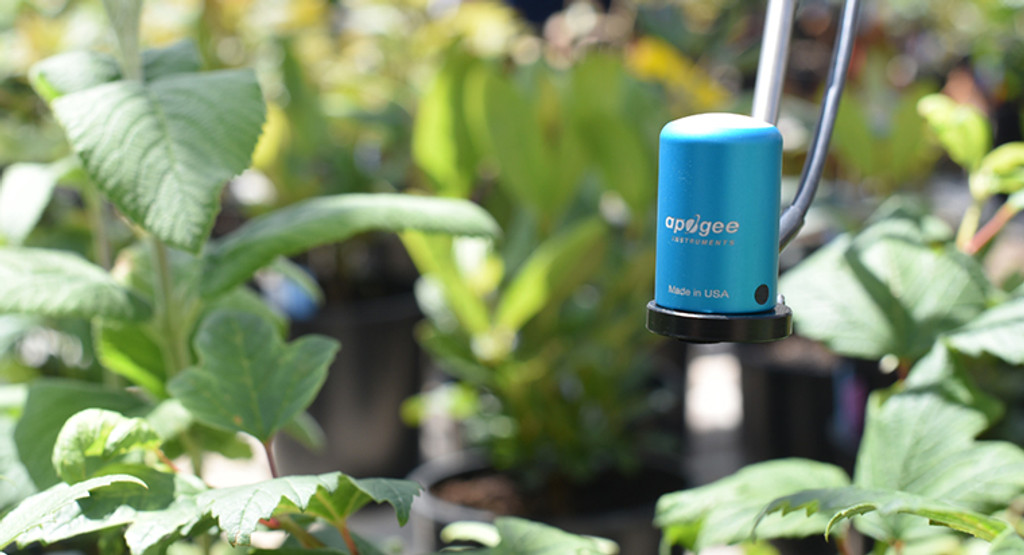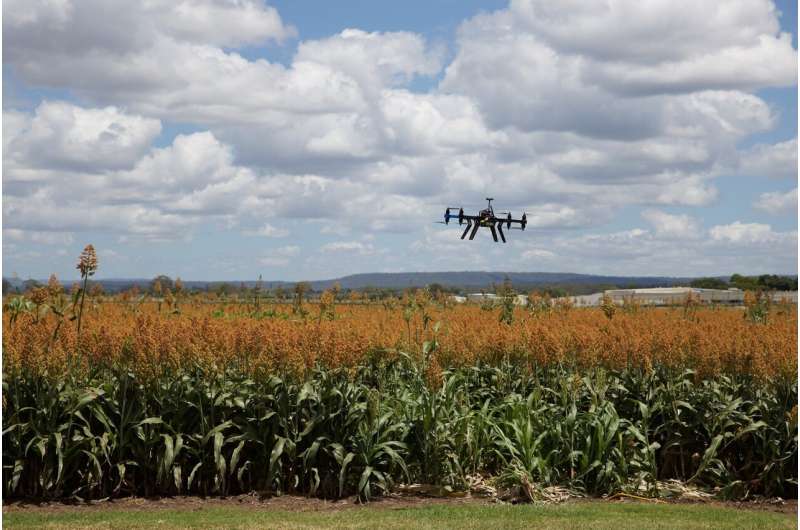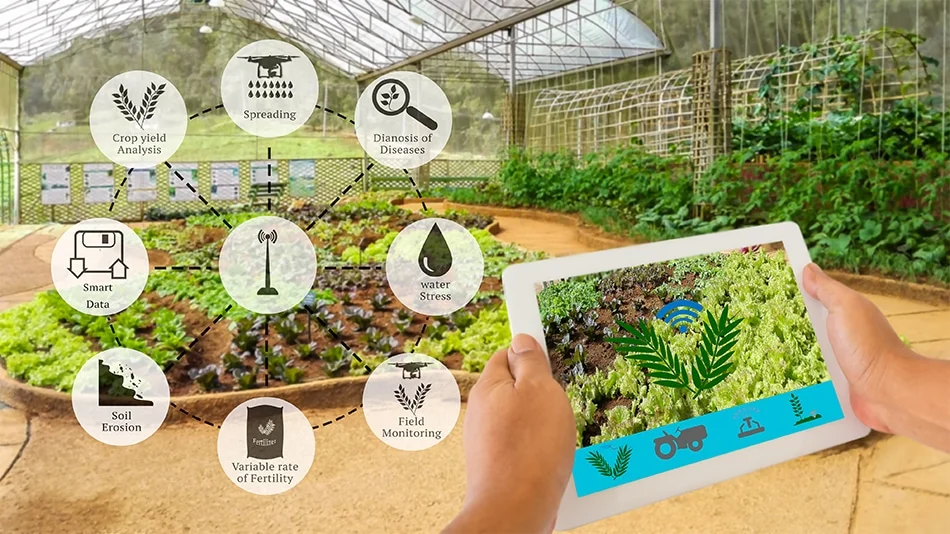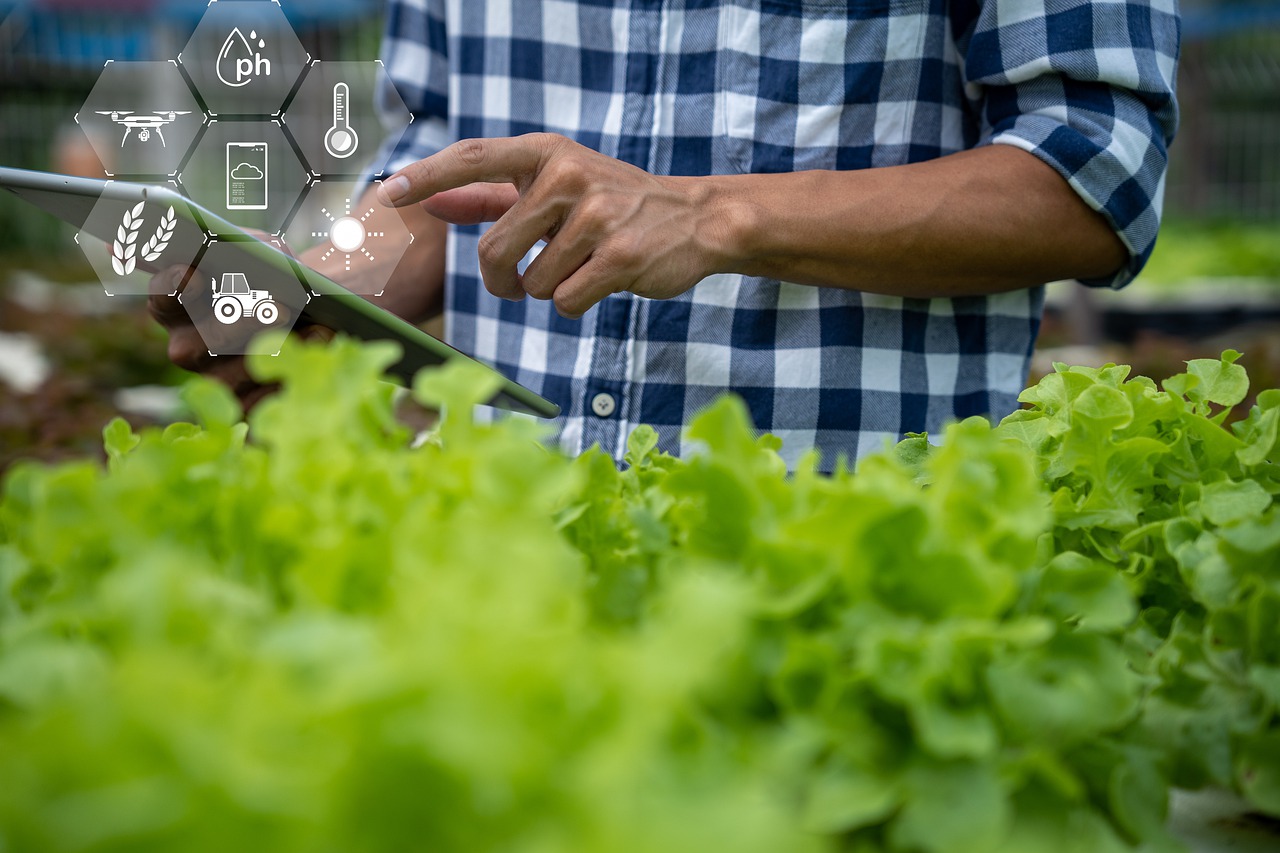Consider a world in which every drop of water, ray of sunlight, and grain of soil work together in perfect harmony to generate healthier, higher-yield crops. This future is no longer a faraway dream, but rather an impending reality owing to quantum technology. While it may sound like something out of a science fiction novel, Quantum Technology in Agriculture is transforming how we produce food. Farmers are increasingly using cutting-edge instruments, such as quantum sensors and quantum computing, to maximize crop productivity, increase sustainability, and ensure the future of the global food supply.
In this post, we’ll look at how quantum technology in agriculture is used effectively, with practical examples and suggestions for incorporating these advancements into farming operations. Let’s look at how quantum advancements are affecting the future of farming.
How Quantum Technology in Agriculture Enhances Crop Growth
1. Quantum Sensors for Precision Light Management
One crucial area where quantum technology is having a huge impact is light management. Photosynthetically Active Radiation (PAR) sensors, which monitor light in the 400-700 nm range, are critical for determining how much light plants receive during photosynthesis. These quantum sensors allow farmers to track light conditions in real-time and make intelligent decisions regarding crop positioning, shading, and illumination.
How It Works:
- PAR sensors employ photodiodes to capture photons in the wavelength range plants use for photosynthesis. Farmers can determine whether their crops receive enough or insufficient light by evaluating the incoming light.
- Quantum sensors can also be used for light mapping, which involves monitoring light dispersion across fields or greenhouses. Farmers may then tweak their setup to ensure even light coverage, which improves growth and productivity.
Pros and Cons
- Precise light data
- Real-time monitoring
- Improved crop placement
- Initial cost of sensors
- Requires training to interpret data
Tip: Install quantum sensors throughout your greenhouse to generate a precise map of light distribution. Adjust your lighting so that all plants receive the appropriate light, resulting in more uniform growth and higher harvests.

2. Quantum Computing for Crop Yield Predictions
Farming has always involved predicting weather patterns, soil conditions, and market demand. However, quantum computing takes this to the next level. With its ability to process vast amounts of data quickly and accurately, quantum computing offers farmers the chance to better forecast crop yields based on real-time information.
Benefits of Quantum Computing:
- Analyzes a multitude of factors, such as historical weather data, soil conditions, and crop behavior, to offer more accurate yield predictions.
- Helps farmers plan irrigation schedules and planting times for optimal growth.
Pros and Cons
- Accurate yield forecasts
- Better resource management
- Reduces waste
- High costs for small farms
- Complex technology requires expertise
Tip: Leverage quantum computing services for predictive analytics that can improve the timing of your planting and harvesting. This allows you to plan more effectively, ensuring higher yields and less crop loss due to weather fluctuations.
3. Quantum Drones for Advanced Soil Analysis
Healthy soil is the backbone of a successful farm, and quantum technology promises promising advances in soil analysis. Drones equipped with quantum sensors may scan fields and collect exact data on soil moisture, nutrient levels, and pest activity. This real-time data is extremely useful for optimizing planting schedules and increasing resource efficiency.
How Do Quantum Drones Work?
- Quantum drones hover over fields, employing modern sensors to detect soil conditions with extreme precision. They can detect nutritional deficits and locations with poor moisture retention, enabling targeted interventions.
- These drones provide a bird’s-eye view of the farm, allowing farmers to gain insights that they would otherwise overlook, taking precision to a new level in quantum technology in agriculture.
Pros and Cons
- Targeted soil treatment
- Reduces resource wastage
- Improved pest control
- Requires drone pilot expertise
- Equipment maintenance
Tip: Use quantum drones to identify nutrient deficit spots in crops. Then, use fertilizers more precisely to reduce waste and promote sustainable farming.

4. Quantum Cryptography for Secure Agricultural Data
As technology becomes more integrated into farming, protecting the massive volumes of data generated—such as crop forecasts, soil data, and market analytics—becomes essential. Quantum encryption uses quantum mechanics concepts to keep this data secure from hackers or theft.
Why It is Important:
- Farmers and agribusinesses frequently manage sensitive information, ranging from trade secrets to proprietary crop data. Quantum cryptography employs quantum key distribution (QKD) to produce encryption that is nearly hard to crack.
- This level of protection is particularly beneficial for large farming operations or supply chains that handle international data transfers.
Pros and Cons
- Unbreakable encryption
- Secure data transfer
- Ideal for large farms
- Expensive setup
- Requires technical expertise
Tip: Consider upgrading your farm’s data management systems using quantum encryption technology to safeguard sensitive information such as crop yields, trade deals, and proprietary farming processes.
5. Quantum Imaging for Real-Time Crop Health Monitoring
Quantum technology is also making strides in real-time crop health monitoring. Quantum imaging tools can detect issues such as disease, nutrient deficiencies, or pest infestations before they become major problems. This proactive approach can save farmers both time and money, reducing crop loss and increasing productivity.
How It Works:
- Quantum imaging uses advanced sensors to detect changes in crop health at a microscopic level. For example, it can spot the early signs of fungal infections, nutrient stress, or water deficiencies, giving farmers a chance to act quickly.
- These tools are especially useful for large-scale farms, where monitoring every plant individually would be impractical.
Pros and Cons
- Early detection of diseases
- Prevents crop loss
- Improves overall plant health
- High cost of imaging tools
- May require specialized equipment
Tip: Incorporate quantum imaging into your crop health management plan. Use the data to adjust irrigation, fertilization, and pest control strategies to prevent problems before they spread.

6. Quantum Algorithms for Efficient Water Management
Water is one of agriculture’s most valuable resources, and it must be managed properly to ensure productivity and sustainability. Quantum algorithms may monitor a variety of elements, including soil moisture, weather patterns, and crop requirements, to optimize irrigation schedules and guarantee water is used efficiently.
Why It is Important:
- Quantum algorithms process complicated data sets quicker than ordinary computers, allowing irrigation schedules to be adjusted in real-time to reflect changing conditions.
- Farms may lessen their environmental imprint and save money by using water more efficiently.
Pros and Cons
- Reduces water wastage
- Lowers irrigation costs
- Eco-friendly
- Initial installation cost
- Requires technical setup
Tip: Install a quantum-enhanced irrigation system with real-time data to automatically modify watering schedules. This conserves water while ensuring that your crops have all they need to thrive.
FAQs
What is quantum technology, and how does it apply to agriculture?
Quantum technology uses the unique capabilities of quantum physics to tackle complicated issues. For quantum technology in agriculture sensors, computation, and cryptography are used to improve precision farming, crop management, and data security.
How does quantum computing differ from classical computing in agriculture?
Quantum computing in agriculture can handle large amounts of data considerably quicker than standard computing, resulting in more accurate crop yield estimates and resource management.
Can small-scale farmers benefit from quantum technology?
Yes, small-scale farmers can benefit from quantum sensors and imaging tools for precision light management and crop health monitoring, however, some technologies may require a significant initial investment.
What are the environmental advantages of applying quantum technology in agriculture?
Quantum technology fosters more sustainable farming methods by maximizing resources such as water and energy, lowering agricultural waste and the environmental footprint.
Conclusion
The integration of quantum technology in agriculture is no longer a pipe dream; it is becoming a reality, with major benefits for farmers and the agricultural business as a whole. From precision light control to real-time crop health monitoring, quantum breakthroughs are changing the way we grow food, optimize resources, and safeguard critical agricultural data.
For farmers that are willing to embrace the future, quantum technology provides intriguing new tools that can lead to increased yields, cheaper costs, and more sustainable practices. While the initial cost may be high, the long-term benefits are apparent. Now is the time for the agricultural sector to utilize quantum technology and elevate farming to new heights.
